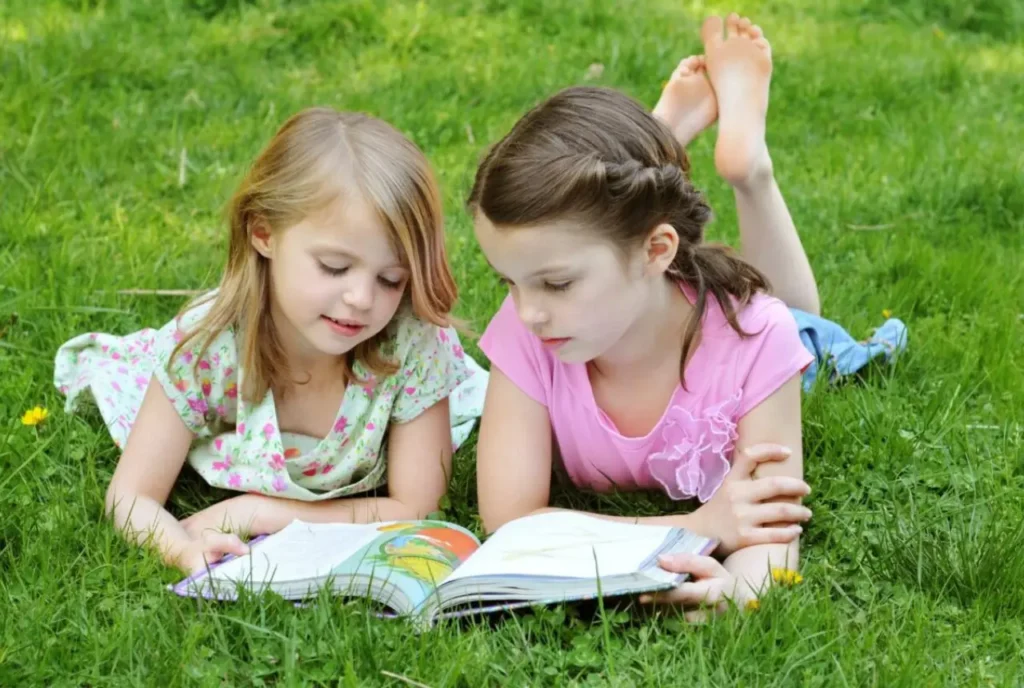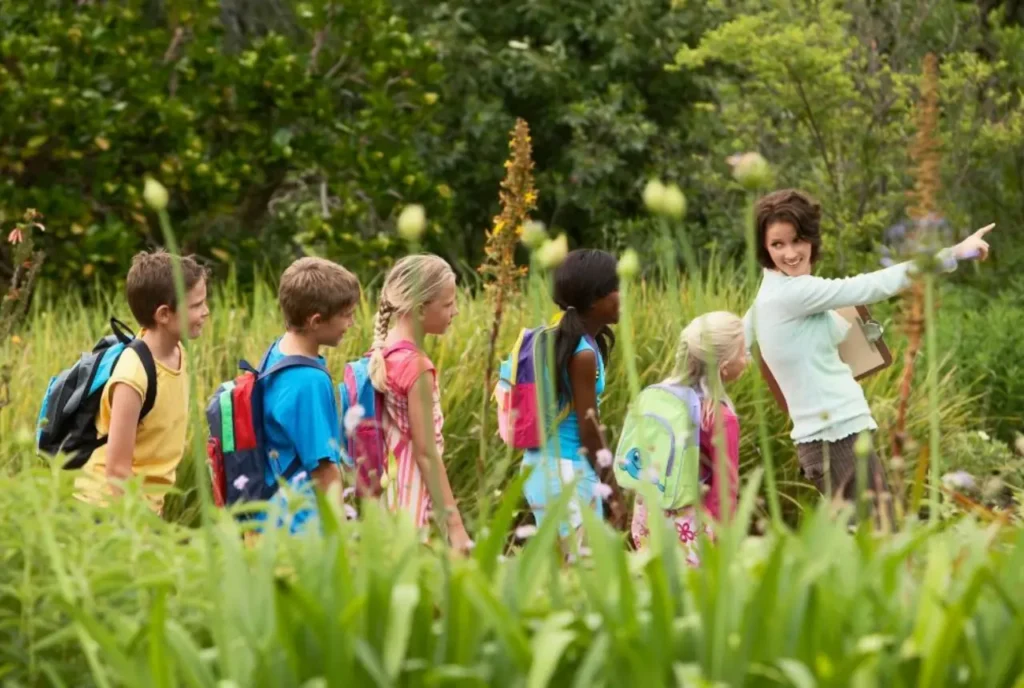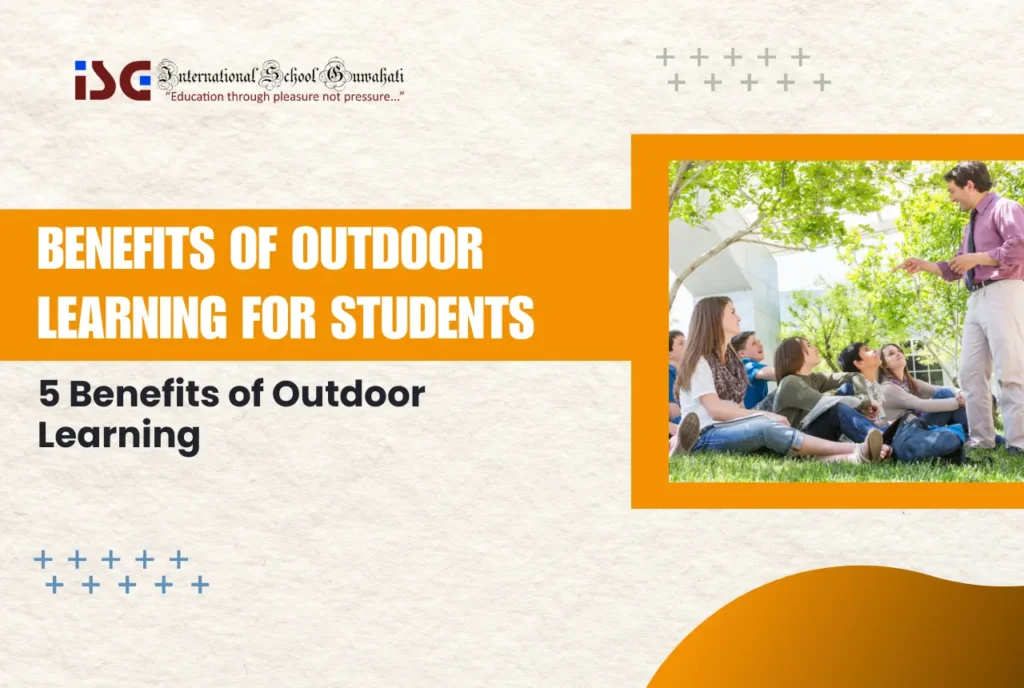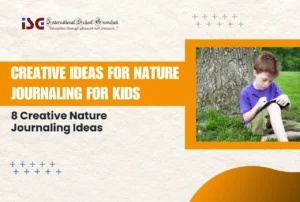![]()
The benefits of outdoor learning are far-reaching for students. Outdoor learning has gained popularity in recent years as an important component of a well-rounded education.
The traditional classroom setting is rapidly giving way to new ways that include nature in the learning process. This transformation is more than a fad; it is the result of extensive research demonstrating the various benefits of outdoor learning in schools.
Students are always eager to step outside and have a run around the playground. In a world of standardized tests and assessments, outdoor learning is becoming increasingly essential as a method for teaching children about the natural world and their local communities.
5 Amazing Benefits of Outdoor Learning for Students

1. Enhanced Cognitive Development
Outdoor environments are sensory playgrounds for growing children. Students actively engage with their surroundings, touching textures on trees and leaves, smelling flowers, and listening to birdsong and rushing water.
This multi-sensory stimulation strengthens memory, improves focus, and enhances problem-solving skills. Studies have shown that students who participate in outdoor learning programs often demonstrate better academic performance compared to their peers in traditional classrooms.
2. Boosted Physical Health and Well-being

Outdoor learning encourages students to move their bodies, reducing sedentary time and promoting physical activity. Sunlight exposure during outdoor learning sessions aids in Vitamin D production, which is essential for bone health and mood regulation.
Research suggests a positive impact of outdoor learning on childhood obesity rates, promoting a healthier lifestyle for young minds and bodies.
3. Increased Social-Emotional Learning
The natural world provides a unique platform for social interaction. Teamwork becomes necessary as students collaborate on projects, navigate trails, or build shelters outdoors. Communication and collaboration skills flourish in these settings.
Being surrounded by nature fosters empathy, resilience, and emotional regulation. Studies have shown that outdoor learning environments significantly contribute to the development of social skills in students.
4. Fostering Creativity and Imagination

Unstructured outdoor play allows students to explore, experiment, and invent. They can climb trees, build forts, or create stories inspired by their surroundings. This freedom sparks curiosity, ignites a sense of wonder, and allows creativity to blossom.
Research indicates that engaging with nature has a positive impact on students’ creative thinking skills.
5. Deeper Connection with Nature
Outdoor learning fosters a love for the environment. By directly experiencing the beauty and wonder of nature, students develop a sense of appreciation and responsibility towards the planet. Nature-connected learning cultivates a desire to protect the environment and promotes environmental stewardship.
Studies have shown that outdoor learning programs effectively increase students’ environmental awareness.
Additional Benefits
1. Improved Focus and Reduced Attention Deficit

Studies suggest that exposure to green spaces can significantly improve attention spans and reduce symptoms of Attention Deficit Hyperactivity Disorder (ADHD).
The calming effect of nature on the nervous system translates to reduced stress levels and improved focus in students engaged in outdoor learning activities.
2. Building Resilience and Risk-Taking Skills
Outdoor activities often challenge students physically and mentally. Climbing rocks, crossing streams, or participating in group games all push students outside their comfort zones.
Overcoming these challenges fosters self-confidence, resilience, and a growth mindset. Studies have shown that outdoor learning environments have a positive impact on student self-esteem.
Creating a Successful Outdoor Learning Program
Benefits for Teachers and Schools
Outdoor learning isn’t just beneficial for students. Teachers often report reduced stress levels and improved classroom management after incorporating outdoor activities.
The novelty and engagement of outdoor learning can positively impact school culture and boost student participation.
Getting Started with Outdoor Learning Activities
The beauty of outdoor learning lies in its flexibility. Teachers can integrate outdoor activities across various subjects like science, math, language arts, and even social studies.
Age-appropriate activities can range from nature scavenger hunts for younger students to conducting plant surveys or water quality tests for older ones.
Numerous resources are available online and through educational organizations that provide lesson plans and activity ideas for outdoor learning.
Safety Considerations and Best Practices
Safety is paramount when venturing outdoors with students. Essential considerations include weather preparedness, adequate supervision, and ensuring students are dressed appropriately.
Creating a positive learning environment outdoors involves setting clear expectations for behavior and managing student conduct effectively. Teacher training programs and risk management resources in outdoor education are readily available to help educators navigate these aspects.
Examples of Outdoor Learning Environments
1. Outdoor Classrooms and Nature Playgrounds

Imagine a classroom with open walls, natural light filtering through trees, and comfortable seating arrangements. These are outdoor classrooms, specifically designed to facilitate learning in a natural setting.
Nature playgrounds, with their focus on loose parts, natural materials, and open-ended play, further enhance the outdoor learning experience by encouraging exploration and sensory learning. Many schools are incorporating these innovative designs into their educational infrastructure.
2. Forest Schools and Field Trips

Forest schools take outdoor learning to a whole new level. These immersive programs often operate year-round, with students spending a significant portion of their school day engaged in play and learning activities in natural environments.
The philosophy behind forest schools emphasizes self-directed exploration, fostering a deep connection with nature and a sense of responsibility for its well-being.
Field trips to natural environments like national parks, botanical gardens, or wildlife sanctuaries provide valuable hands-on learning experiences.
These trips allow students to observe plants and animals in their natural habitats, conduct scientific investigations, and gain a deeper understanding of ecological concepts.
Many educational organizations and park rangers offer guided tours and programs specifically designed for school field trips.
Conclusion
The eight key benefits of outdoor learning for students here paint a clear picture: outdoor learning is not just an alternative teaching method, it’s a powerful tool for nurturing well-rounded individuals.
From boosting cognitive development to fostering a love for nature, these experiences contribute significantly to a child’s academic success, social-emotional growth, and physical well-being.
As research continues to solidify the advantages of outdoor learning, schools have a responsibility to integrate these experiences into the curriculum.
By embracing the vibrant classroom that nature offers, educators can empower students to become curious learners, responsible citizens, and lifelong stewards of the environment. Let’s open the doors to a world of learning without walls, where the sky is the limit, and the growth potential is boundless.







